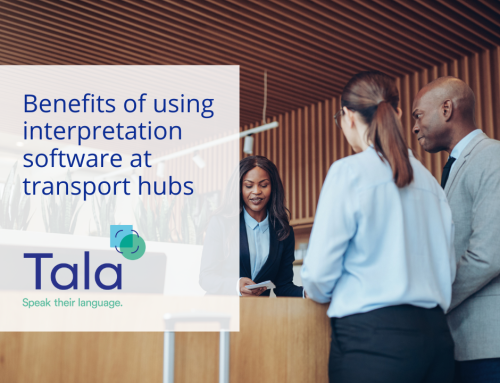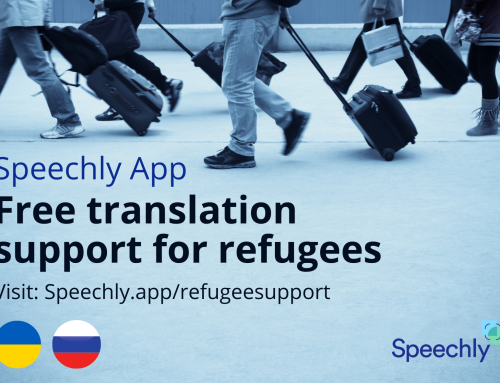Picture this scenario: A patient arrives at a clinic in the UK and appears to be in a lot of pain. The young man speaks very little English, but keeps pointing at his stomach and grimacing. The ward staff eventually ascertain he is Brazilian, and put a call out for a Portuguese-speaking interpreter. However, before the interpreter can arrive, the young man’s condition worsens. The doctors now face a dilemma: wait till they find out exactly what’s wrong (at the risk of things getting worse), or initiate treatment without a proper diagnosis.
In our highly globalised societies, this kind of situation happens on a daily basis in hospitals, surgeries and health clinics around the world. If treatment teams cannot communicate with patients, they’re forced to wait for interpreters or must base clinical decisions on partial information.
However, a growing number of clinics, GPs, and hospitals are turning to digital interpreting solutions to address this problem. Let’s see why.
Healthcare interpretation challenges
Any doctor or nurse who works somewhere with a large multicultural community will have first-hand experience of the challenges associated with interpretation in healthcare.
Several academic studies show that when patients can’t make themselves understood, their health outcomes tend to be worse. Statistics reveal that almost half of patients who don’t speak the local language have actually been harmed by care providers.
Even more worrying, language barriers can lead to a heightened risk of death. A study in Canada found that patients who don’t receive treatment in their own language spend longer in hospital and are significantly more likely to die.
Good quality interpretation is the solution. However, relying on interpreters has its own drawbacks:
- It’s expensive – research shows UK hospitals spend millions of pounds on interpretation services every year
- It can often take several hours for interpreters to arrive at the hospital, during which time a patient’s condition could have worsened severely
- Many global languages are not well served by local interpreters – meaning that the limited numbers of speakers available are often overstretched
Related: What do medical interpreters do?
A technological solution to healthcare interpreting
Tala is an artificial intelligence-powered translation software that is ideally suited to healthcare settings. Accessible as a smartphone app or via a smart speaker, the technology is intuitive and easy to use.
Doctors, nurses, paramedics, and other healthcare staff simply speak into Tala in English (or another language), then Tala instantaneously translate their voice recording and produces an audio file in the patient’s language (45 global languages are currently supported). The patient then replies in their language and Tala translates back into English.
The technology is significantly more nuanced than free online translation tools, is more accurate, and requires no typing or reading either.
Here are just some of the ways that Tala could be used to improve healthcare outcomes for patients who don’t speak the same language as their treatment team.
Brochure: Download our Tala healthcare factsheet
Treatment instructions
Following an EEG scan, a neurologist has confirmed that a young Chinese patient’s seizures are indeed caused by epilepsy. She wants to explain which medication the patient needs to take, how often to take them, and what the possible side effects of the anti-epilepsy drugs could be.
Without an application like Tala, this would represent a lot of information for the patient to take on board – even if they did have friends, family or a professional interpreter to explain the results to them in Mandarin. But, by using Tala, the app clearly translates everything the neurologist has said. What is more, it even produces a written transcript of the appointment so the patient can read it over again later.
Emergency care
Two paramedics have just arrived at a building site where a Bulgarian employee has fallen from a height and is lying on the ground unable to move. They want to speak with him to find out where he is feeling pain before deciding on the best way to transport him to the hospital. However, this builder speaks little English and cannot express exactly what he is feeling.
But, by using an app like Tala, the paramedics can easily communicate with this man in Bulgarian to find out where he’s in pain. This means they can proceed with moving him to the ambulance in the safest manner.
An overnight stay
A ward sister in a gynaecology and obstetrics department suddenly hears a cry of pain from a Turkish overnight patient who does not speak any English. At first sight, the sister cannot see anything physically wrong with the woman, but she appears to be in agony.
It is late and the usual interpreter is not answering their phone. Fortunately, the ward sister can use Tala to speak with the patient in Turkish to find out exactly what’s wrong.
Interpretation tech: an invaluable tool for medical teams
As the three examples listed in this article show, medical interpretation software has a wide variety of applications in healthcare settings. Rather than always relying on interpreters to physically travel to hospitals, technology allows far more healthcare staff to give patients accurate, timely and effective treatment, whatever language they speak. Ultimately, this improves healthcare outcomes for more people, and could even save lives.
To find out more about Tala, to see it in action, or to try out for yourself, contact us today.





